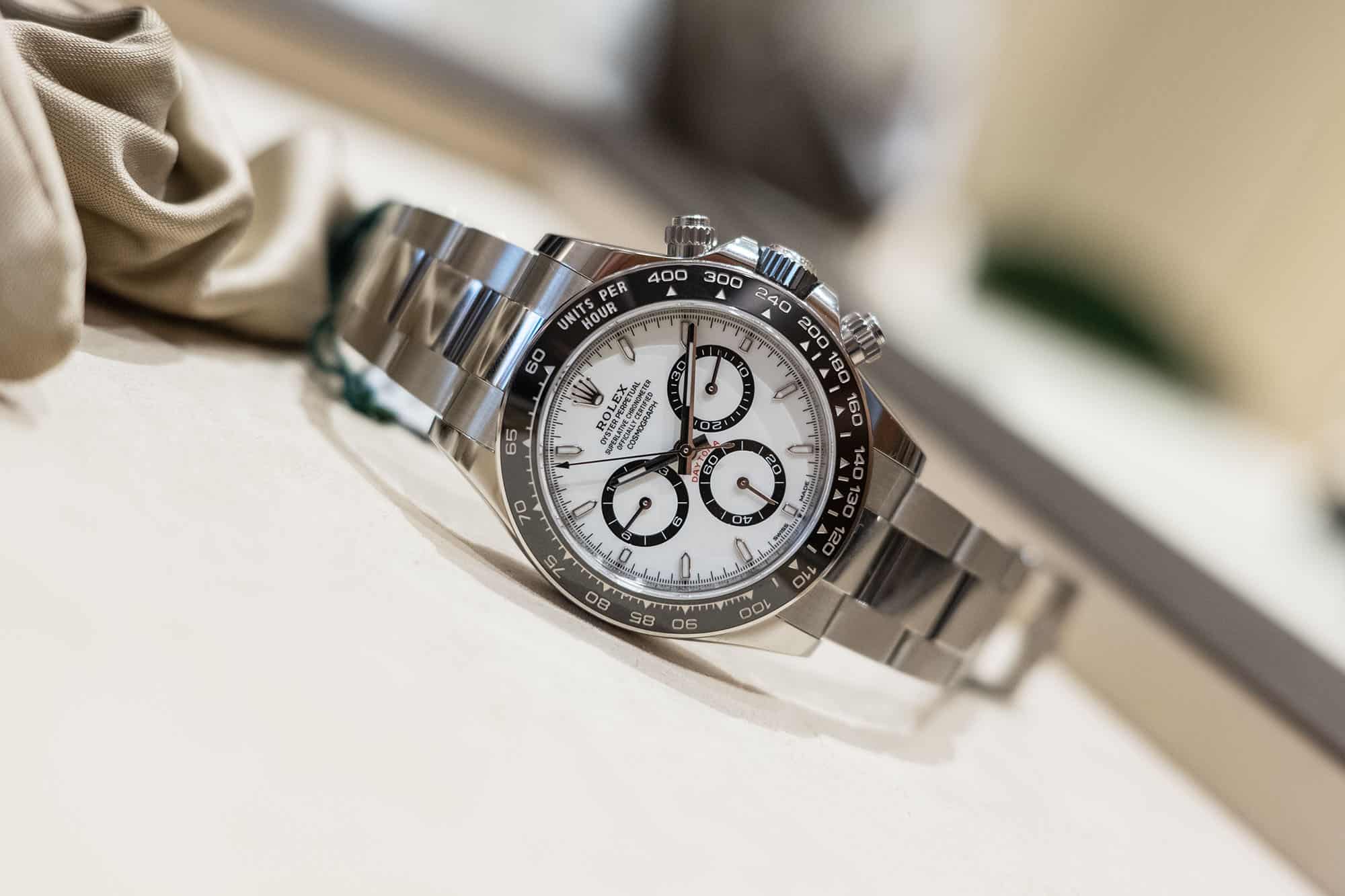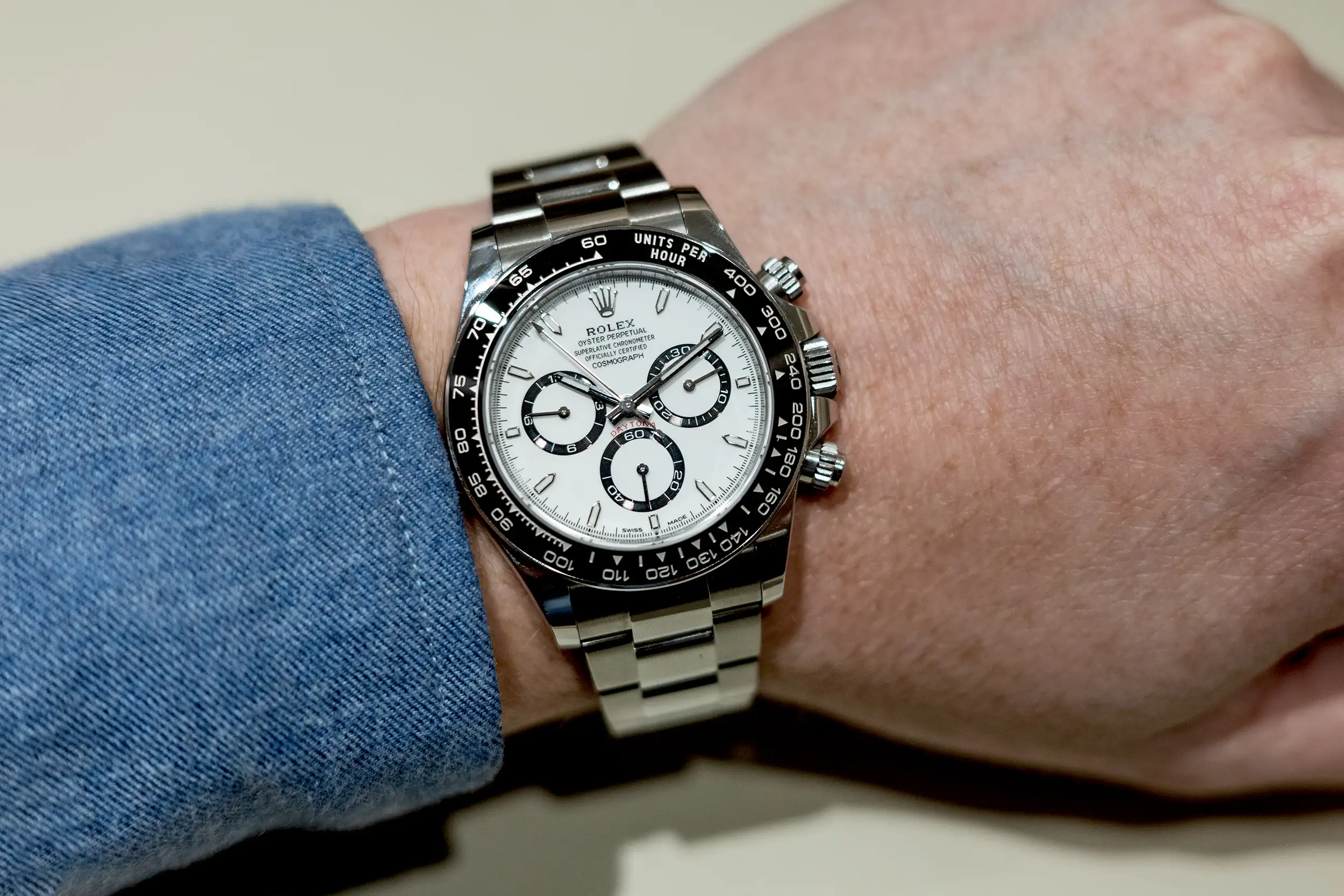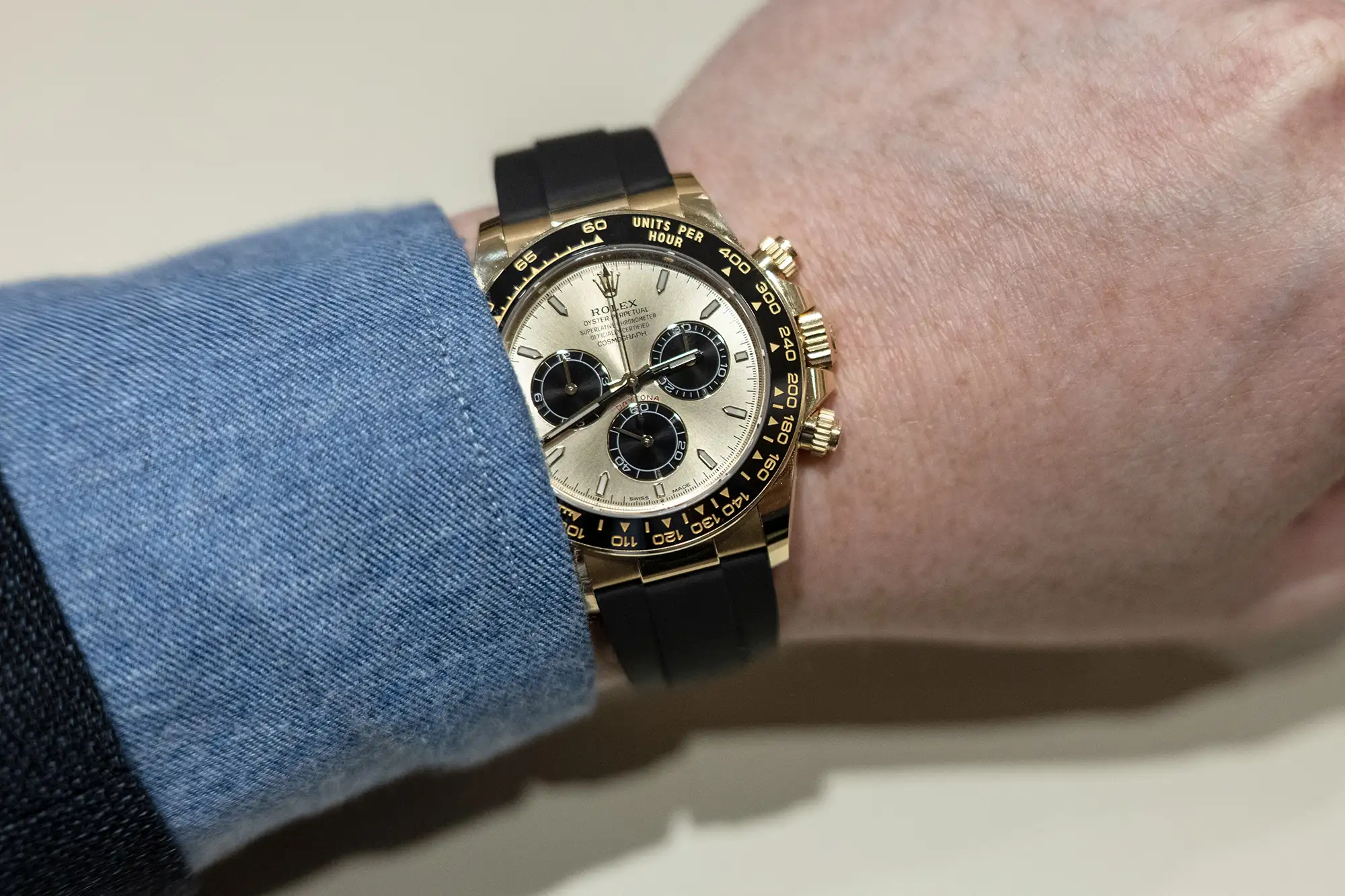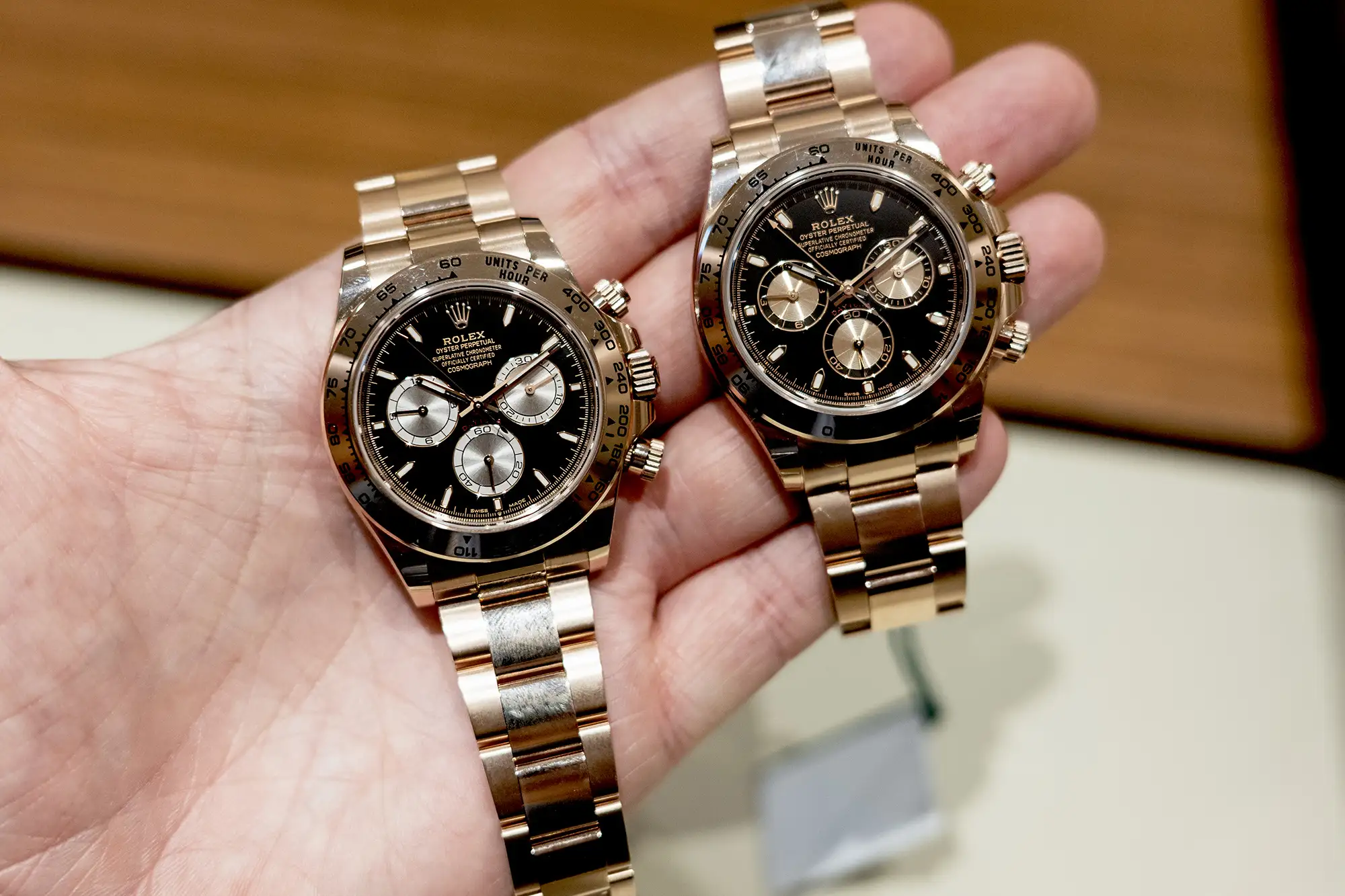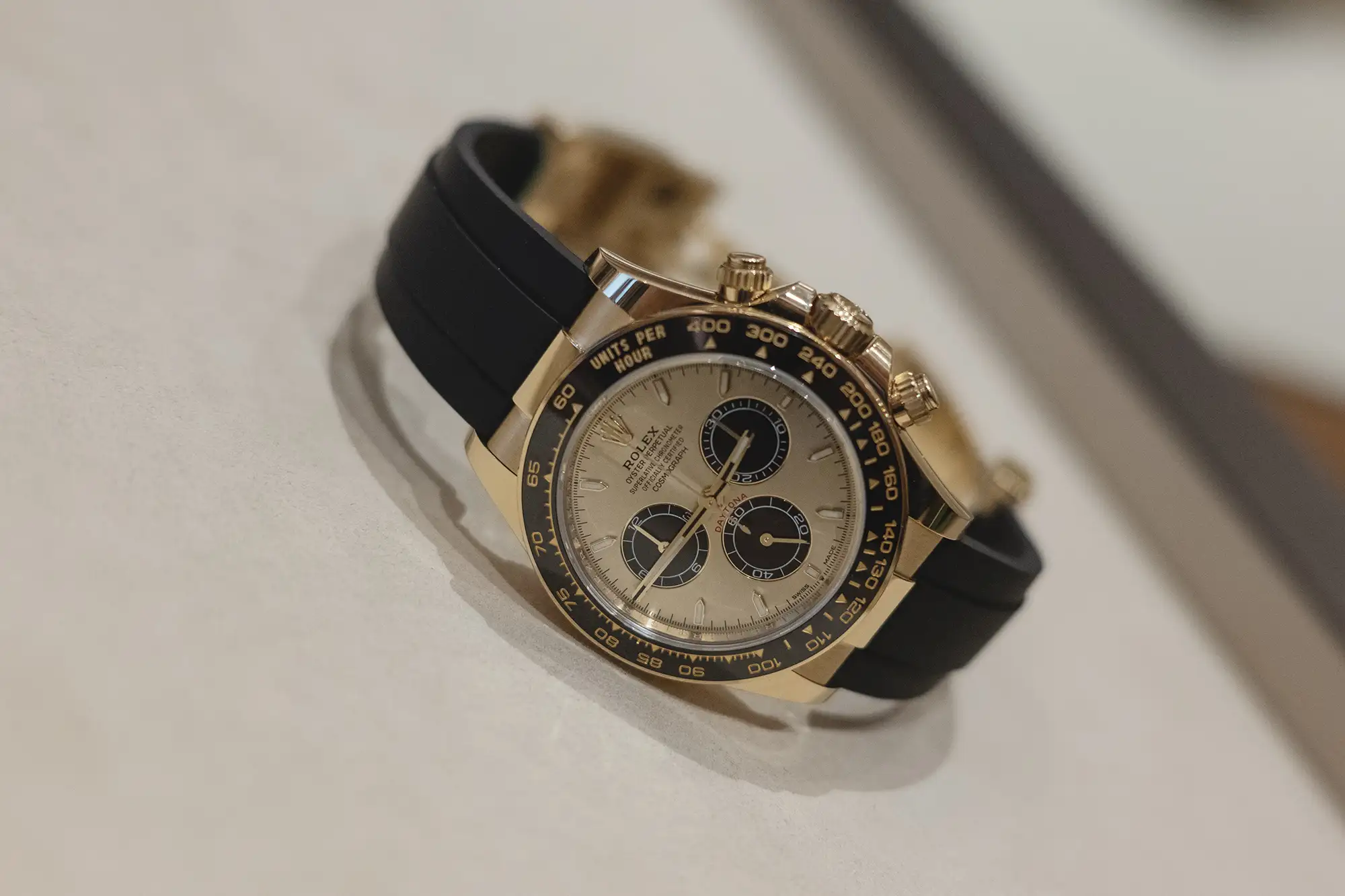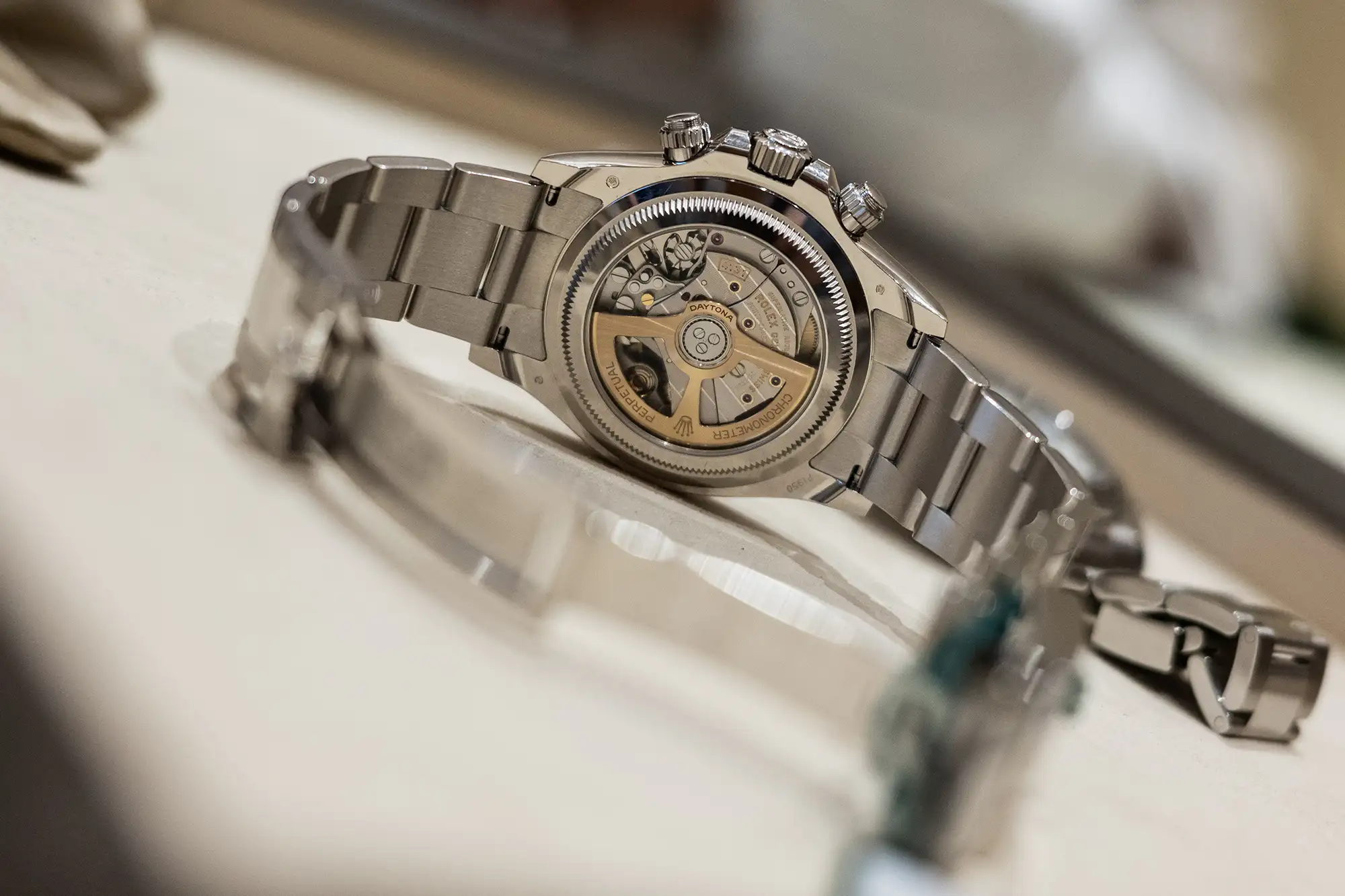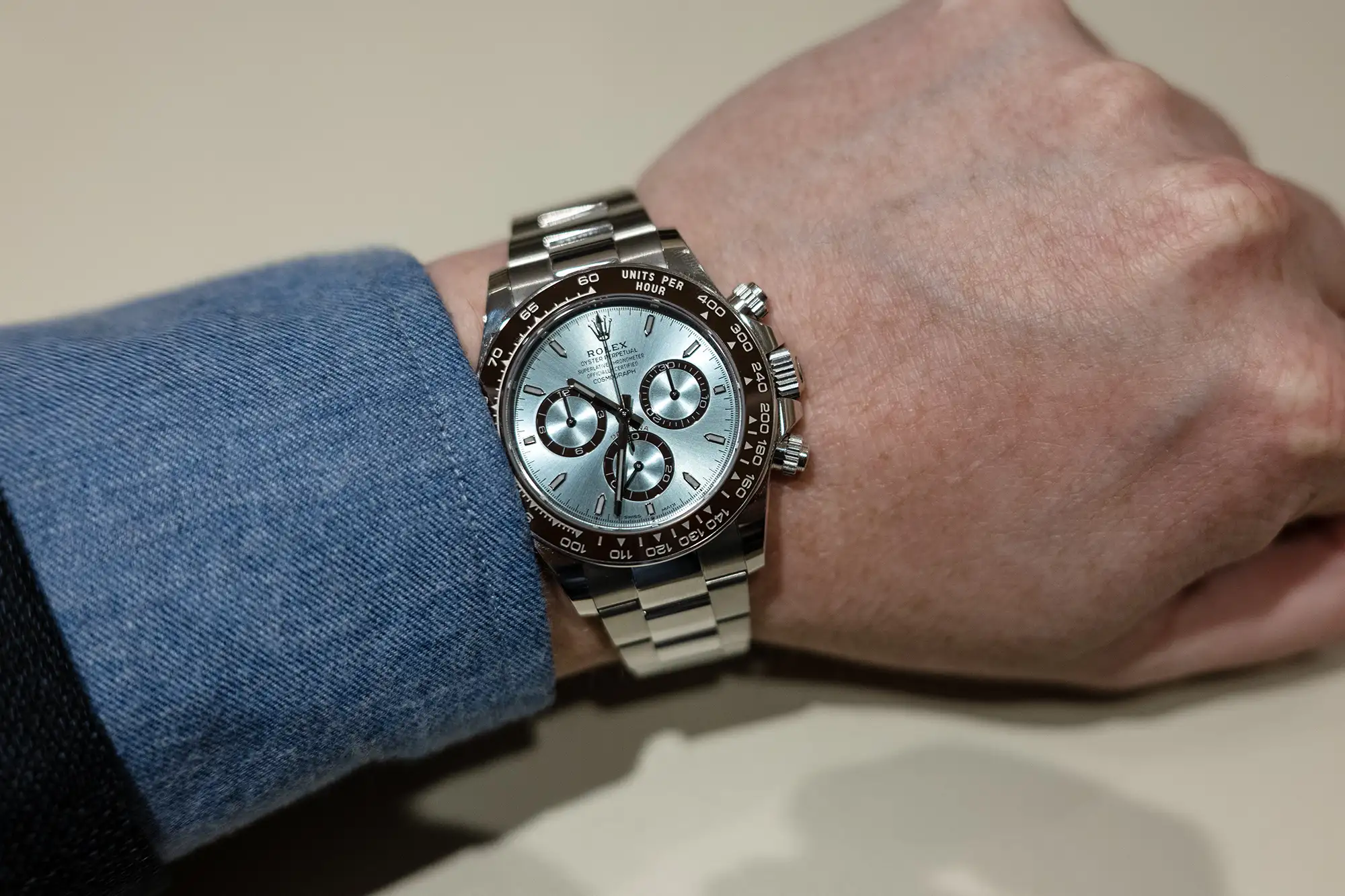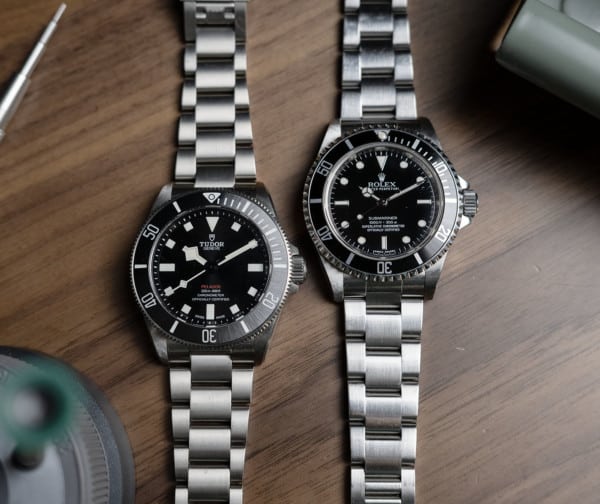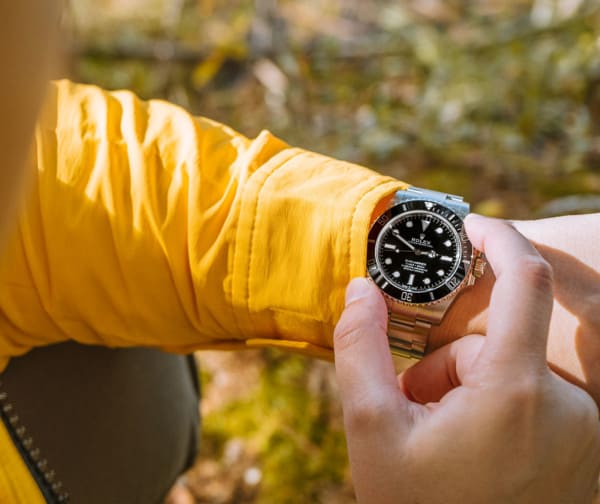Change is hard, as they say. Particularly when the thing that requires it, wasn’t exactly broken in the first place. Rolex has found themselves in a near impossible situation of updating the near universally lauded 1165XX generation of the Daytona. A watch that’s recently found itself in a position it never really asked to be in, serving as the barometer of the second hand watch market and subsequently the subject of ire to many lamenting availability issues writ large at boutiques the world over. The watch itself, though? When considered at its initial MSRP upon introduction in 2016, which was $12,400 (or even its MSRP last year, which was $13,500), is pretty awesome. Not without fault, certainly, but a mighty fine chronograph to be sure and a total sweetheart on the wrist.
But of course, the Daytona was a rare bird to score at retail pricing, and judging it at aftermarket prices was a far murkier proposition. Still, there’s no doubting that this watch tapped into something deep, serving as the veritable poster child of the meteoric rise of the hype watch, and for good reason: it’s a great all around watch sitting on a load of heritage that includes some of the coolest figures of the past 50 years helping to inadvertently build the watch’s lore to unhealthy levels in today’s climate. While things have mercifully cooled off over the past 12 months, this is still largely the context in which Rolex is tasked with creating a new generation of Daytona, which they’ve done with the release of the 1265XX generation at Watches & Wonders this year.









 Featured Videos
Featured Videos




